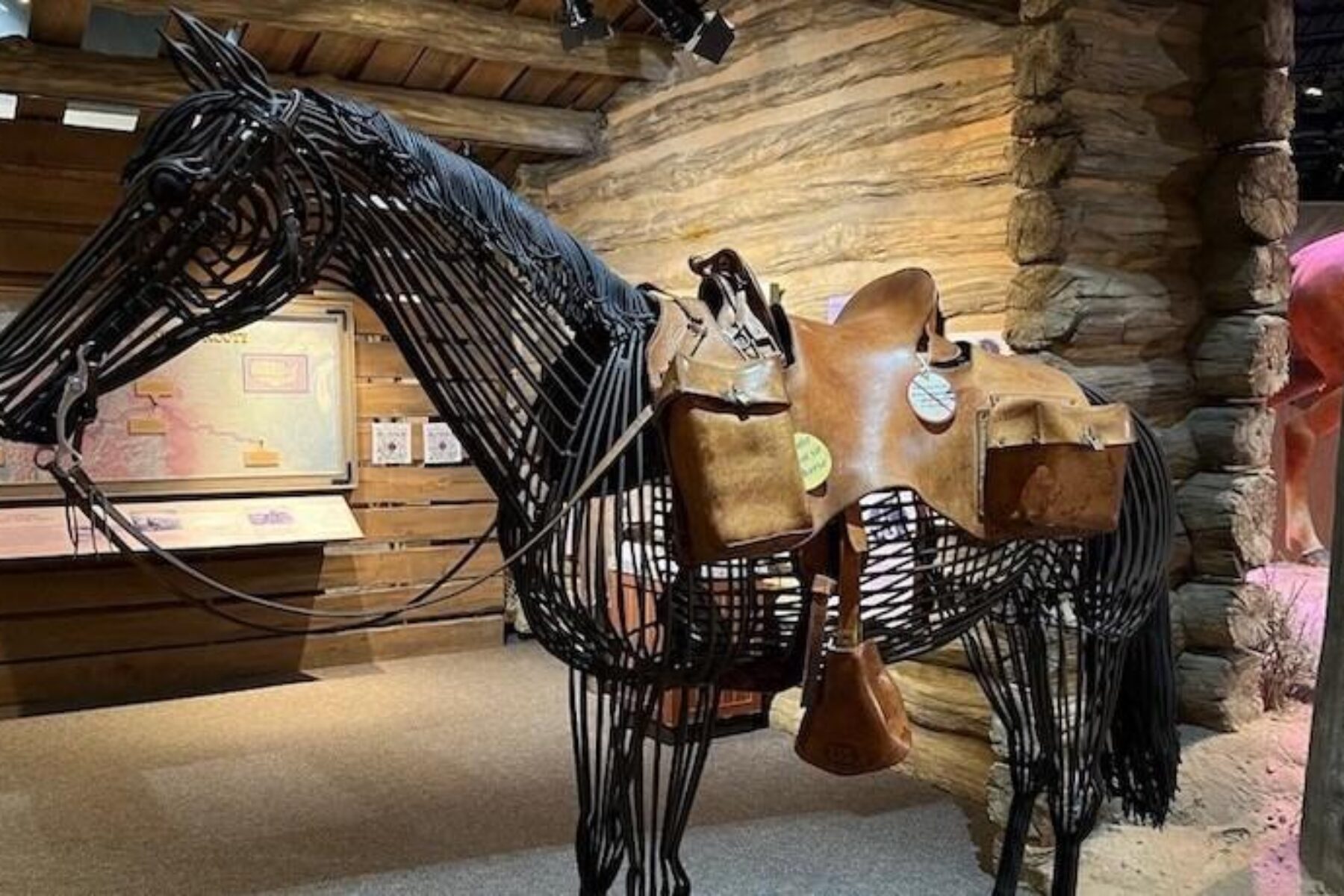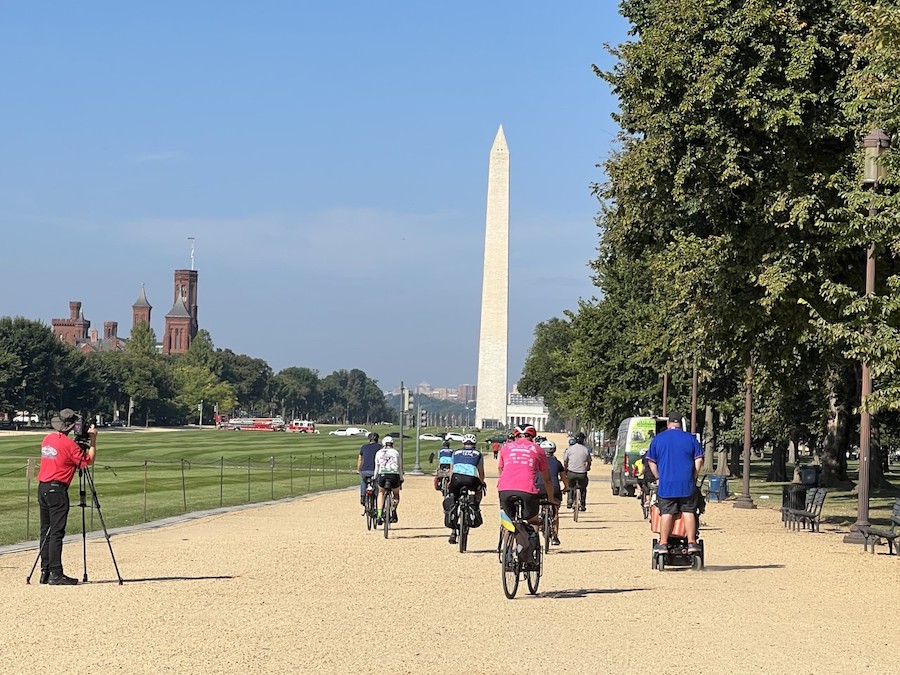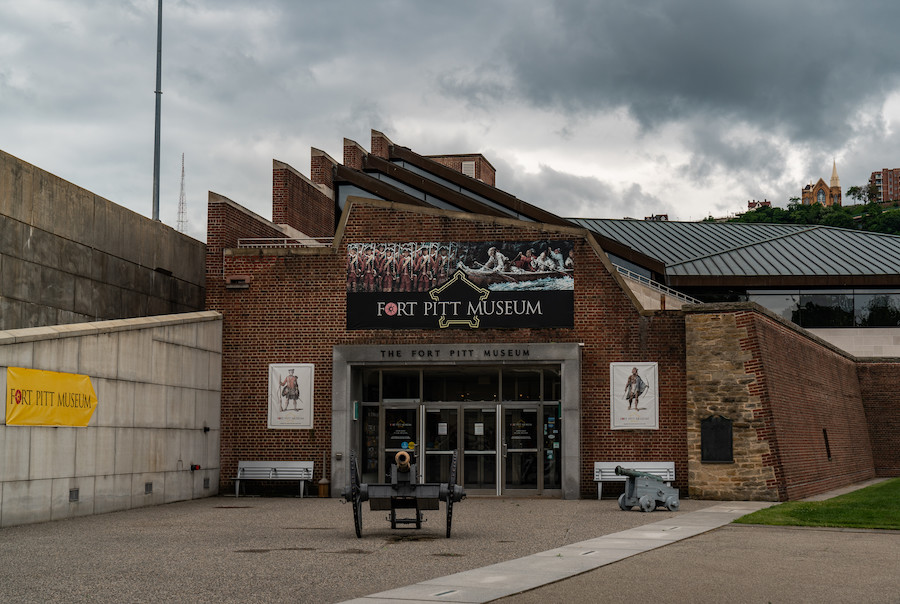10 Great Places of Learning Along the Great American Rail-Trail

With the school year well under way and midterms looming, many students are kicking it into high gear with their studies. But outside of school, communities across America are full of additional opportunities to soak in the knowledge—and what better way to experience a few of them than via an iconic cross-country rail-trail?
As autumn weather takes over, the Great American Rail-Trail® and its hosts trails connect to many places of learning, history and culture where students can take a break from the grind of classwork and explore.
Here are some of our favorites.
National Mall Trails (Washington, D.C.)

The easternmost portion of the Great American Rail-Trail begins at the National Mall in Washington, D.C., and connects to the Rock Creek Park Trails and the 12.7-mile Capital Crescent Trail.
Unsurprisingly, the area around our nation’s capital is home to the world’s largest museum complex, the Smithsonian Institution, and several of its revered places of learning can be found along the National Mall and are easily accessible for pedestrians and bicyclists. These include the National Museum of American History, National Museum of Natural History, National Museum of African American History and Culture, National Museum of the American Indian and National Air and Space Museum (D.C.)—which just underwent a major renovation and is one of the most popular museums in the world.

Related: World Record Holder Sets Out on 475-Mile Wheelchair Trek on the Great American Rail-Trail
Ohio to Erie Trail (Ohio)

Spanning from Cleveland to Cincinnati, the Ohio to Erie Trail, which comprises multiple rail-trail hosts, is a gateway trail for the Great American that makes up a 271.9-mile section of the route in Central Ohio. Around its midway point, the trail slices through the City of Columbus and briefly runs along the Scioto River. On W. Broad Street, just across the river from Downtown Columbus and across the river from the trail, you’ll find the esteemed Center of Science and Industry (COSI).
COSI is a 58-year institution of science and industry that has a wide range of family-friendly exhibits. A highlight is the gallery of casts displaying various dinosaurs, including a T. Rex and triceratops. COSI also has a planetarium that offers a chance to explore the universe as well as other space-themed exhibits and technology used for ocean exploration.
Mad River Trail, Wolf Creek Trail (Ohio)

The Mad River Trail and Wolf Creek Trail make up slithers of the Dayton-area portion of the Great American. The Wright Brothers National Museum, located by the University of Dayton, features exhibits and artifacts of Orville and Wilbur Wright’s journey to becoming aviation pioneers.

The museum includes the 1905 Wright Flyer III, one of the brothers’ early aircrafts. It is housed in Wright Hall. According to the museum, the Wright Flyer III is the only airplane designated as a National Historic Landmark and was considered by the Wright brothers to be their most important aircraft. Though the Wright brothers’ first flight occurred near Kitty Hawk, North Carolina, they gained skills necessary for the flight while living in Dayton. Adjacent to Wright Hall is a replica of the Wright brothers’ bicycle shop that they owned in West Dayton.
Three Rivers Heritage Trail (Pennsylvania)

Pittsburgh has a plethora of museums and cultural institutions, including many sites that are accessible just off the Three Rivers Heritage Trail, which runs along the Pittsburgh waterfront and through downtown Pittsburgh.
The Fort Pitt Museum is located at Point State Park, right where the Monongahela and Allegheny rivers converge into the Ohio River. Built on the same grounds where Fort Pitt and Fort Duquesne once stood, the museum focuses on the history of the American Revolution as well as the French & Indian War. It includes the Fort Pitt Block House, which was built in 1764 and is all that remains of the original Fort Pitt.
Also located along the riverbanks, the Carnegie Science Center offers programs for all ages, with exhibits relating to many areas of science. The center uses curiosity to educate its visitors, with exhibits such as Highmark Sportsworks teaching the laws of science to kids through sports, a miniature railroad and village animating life in Pittsburgh during the age of the railroad, laser shows, a planetarium and observatory, and many others.

Related: Riverfront Resurgence: Pittsburgh’s Three Rivers Heritage Trail
Pittsburgh has plenty of other museums and places of higher knowledge to offer around the city slightly further away from the Three Rivers Heritage Trail, including renowned institutions such as the Andy Warhol Museum, Heinz History Center, Children’s Museum of Pittsburgh and the Carnegie Museums of Art and Natural History.
Cardinal Greenway (Indiana)

The gateway trail for Indiana’s section of the Great American, the Cardinal Greenway stretches from Richmond, just past the Ohio border, to Marion. In Richmond, you’ll find The Model T Ford Club of America Museum, a unique local educational attraction that highlights “the car that put the world on wheels.”
The museum aims to collect and preserve artifacts from the Model T era to demonstrate and educate future generations on the history related to the important car. It has five immersive exhibits: two early 1900s replica Ford agency showrooms, a vintage garage, a machine shop and an agriculture room. The museum also has a hands-on Model T simulator.
Related: Trail of the Month: Indiana’s Cardinal Greenway (September 2018)
Olympic Discovery Trail (Washington)

Port Townsend, Washington, is a tiny town of less than 10,000 people sitting near the Admiralty Inlet and the Strait of Juan de Fuca, northwest of Seattle. The town sits right near the Olympic Discovery Trail, the very last—but expansive—section of the western end of the Great American. Port Townsend has multiple museums.
The Port Townsend Aero Museum was founded by experienced aircraft restorers. It was originally based out of a group of hangers near the local airport but has since moved into a new building. The museum has a large number of old airplanes dating as far back as the 1920s on display.
Also in town is the Port Townsend Marine Science Center. The educational and scientific entity is dedicated to the conservation of the Salish Sea and maintains an aquarium and museum in nearby Fort Worden State Park.
Related: Connections of Land, Sea and Sky: Olympic Discovery Trail
White River Trail, Northern Cheyenne Healing Trail (Nebraska)

In western Nebraska, along the 3-mile White River Trail, you’ll find Fort Robinson, constructed by the U.S. Army around 1878. It is now part of Fort Robinson State Park and home to the Fort Robinson History Center.
The base played a major role in the Sioux Wars in the late 1800s and is where the Lakota war leader Crazy Horse was killed by infantry guards following a breakdown in negotiations with U.S. military leaders. In 1879, 130 Northern Cheyenne men, women and children who were imprisoned at the fort attempted to escape in a series of events well known today by many as the Northern Cheyenne Breakout, or Northern Cheyenne Journey Home.
Read more about the Northern Cheyenne Journey Home and the healing trail in development that will honor the legacy of those involved.
And many others would go on to inhabit the fort as well. “Native Americans, Indian agents, African-American Buffalo Soldiers, the K-9 Corps, German Prisoners of War—these are just some of the people whose lives intersected with Fort Robinson,” the history center’s website says. “Explore this complex past in exhibits in the 1905 post headquarters building that trace the history from the post’s role guarding the Red Cloud Agency (1874–77) through the housing of World War II German PWs (1943–46).”
Platte River Trail (Wyoming)

The National Historical Trails Interpretive Center describes itself as “Where the road ends and the West begins.” Located in Casper, where a small portion of the Great American in Wyoming is complete, the center presents information about the approximately 500,000 emigrants who traveled through the Casper area between 1840 and 1869 on three National Historic Trails: The Oregon Trail, The Mormon Trail and the California Trail.
The center has seven galleries for visitors to explore; this includes exhibits for each of the three historic trails, The Pony Express Trail, “The U.S. Looks West,” “Ways of the People” and “Epilogue: The Trail Today.” There are other exhibits as well, including simulated experiences such as taking a wagon ride over the North Platte River.

Related: Trail of the Month: Wyoming’s Platte River Trail (June 2019)
Mississippi River Trail (Iowa)

Located along the Mighty Mississippi on the border of Iowa and Illinois, Davenport is home to The Putnam Museum and Science Center, an affiliate of the Smithsonian Institution and one of the first museums built west of the Mississippi river. The museum has an array of science, history and natural world exhibits. The Putnam cares for more than 250,000 individual objects that are broken down into four categories: natural science, regional history, anthropology and archives.
Slightly further afield, Waterloo has other unique places to explore right near the Cedar Valley Lakes Trail. The Our Freedom Story Mural along the Cedar River at the Waterloo Center for Arts commemorates the history of the civil rights movement in the town. Also in the Waterloo Center for the Arts, you’ll find a significant collection of Mexican folk art and the world’s largest public collection of Haitian art outside of Haiti.
Old Yellowstone Trail (Montana)

In western Montana along the Old Yellowstone Trail, the Grant-Kohrs Ranch National Historic Site near rural Deer Lodge was created to commemorate the western cattle industry in the United States. Visitors can experience a tour of the wide-open spaces of the ranch, explore the compound’s 88 historic buildings and structures, and participate in a ranger program with a park ranger to learn about how the cattle era helped shape our nation.
Don’t Miss: The Great American Rail-Trail Experience: Connections to Our National Scenic and Historic Trails

Donate
Everyone deserves access to safe ways to walk, bike, and be active outdoors.
